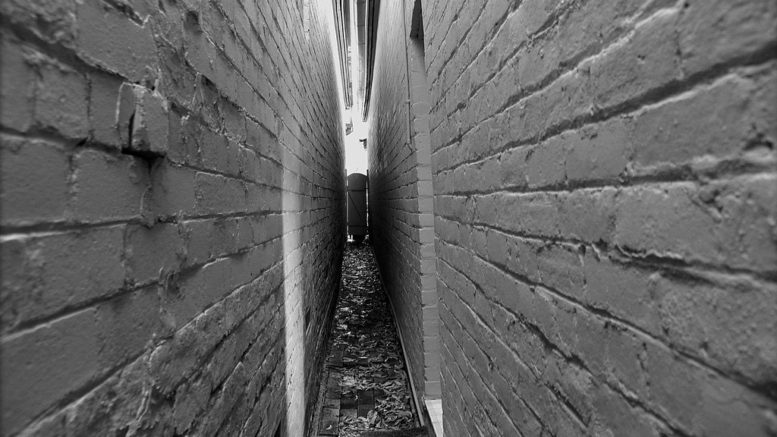Opposition from within his party and entrenched corruption have made it almost impossible for him to enact reforms. By Michael Cohen August 12, 2019, 11:01 PM CDT

LISTEN TO ARTICLE
5:00
SHARE THIS ARTICLE
When Cyril Ramaphosa succeeded Jacob Zuma as South Africa’s president, he promised a “new dawn” after nine years of misrule that hobbled the economy. Eighteen months later, hopes have dissipated that the former labor union leader can orchestrate a turnaround. The economy shrank the most in a decade in the first quarter of this year; 38% of the workforce can’t find jobs or have given up looking; and massive bailouts for the debt-stricken state power utility are draining the country’s coffers, putting South Africa at risk of losing its sole investment-grade credit rating.
Ramaphosa himself, a respected 66-year-old lawyer who led the negotiations that brought an end to white-minority rule in 1994, is stuck in a political quagmire. While he won control of the ruling African National Congress by a razor-thin margin in late 2017, members of an ANC faction loosely allied to Zuma remain entrenched in senior positions in the party and the state, undermining Ramaphosa’s authority and limiting his scope to tackle rampant graft and nepotism.
The president has axed several cabinet ministers with tainted reputations, replaced the chief prosecutor and head of the national tax agency, and revamped the boards and management of troubled state companies. His efforts to sweep the government clean helped steer the ANC to its sixth consecutive win in May elections. But his detractors in the party have continued to push back against his anticorruption crusade, which has eroded investor confidence. They’ve demanded changes to the central bank’s inflation-targeting mandate and advocated land seizures to address racially skewed ownership patterns dating to apartheid and colonial rule, when members of the black majority were largely deprived of the right to own property.
“A more forceful leader could have adopted a blitzkrieg strategy straight after the election victory and probably been victorious. But Cyril Ramaphosa is not such a leader,” says Robert Schrire, a politics professor at the University of Cape Town. By moving cautiously, the president may have ensured the stability of his government, but at the expense of his ability to effect change, Schrire says. “The opportunity has passed.”

The president’s political challenges extend beyond the ANC. Powerful labor unions that played a key role in bringing Ramaphosa to power appear intent on derailing efforts to turn around state-owned power utility Eskom Holdings SOC Ltd. They’ve rejected cuts to its bloated workforce and plans to break it into three operating units that would be easier to manage. The president has also been locked in legal battles with the nation’s antigraft ombudsman, who accuses him of failing to disclose a campaign donation.
Despondency over the stalemate is evident in the financial markets. The rand, which jumped to a three-year high after the ANC forced Zuma to quit and replaced him with Ramaphosa, has reversed all of its gains. Meanwhile, government bond yields have spiked over the past month as the cost of a three-year bailout for Eskom ballooned by $4 billion, to $8.6 billion. “The additional support to ease the company’s financial pressures would be credit negative for South Africa because it would be an additional drain on fiscal resources,” Moody’s Investors Service, the only major rating company that doesn’t classify the nation’s debt as junk, wrote in a July 24 report. “The lack of a strategy to return Eskom to a more stable financial situation that would reduce the need for government support exacerbates the problem.”
Morgan Stanley analyst Andrea Masia sees the budget deficit widening, to about 6.4% of gross domestic product in the current fiscal year and 6.6% in 2020-21, from 4.2% in the year ended March 2019, mainly because of the extra money being poured into the utility. Eskom lost a record $1.4 billion in the 12 months through March. The February budget projected a gap of 4.5% and 4.3% for the two years, respectively, though the country’s growth prospects have deteriorated since then.
The government has made mistakes and failed to implement coherent policies, Ramaphosa concedes, while unchecked graft has impaired its ability to fix the country’s problems. Zuma is standing trial for allegedly taking bribes from arms dealers almost two decades ago, but no other high-profile individuals have been indicted—despite a judicial panel having unearthed evidence that staggering amounts of money were looted from the state during Zuma’s administration.
Ramaphosa’s plans to boost the annual economic growth rate to 5% and halve the unemployment rate include luring $100 billion in investment and getting private companies to partner with the government to build infrastructure. He’s targeting a top 50 position in the World Bank’s ease of doing business ranking within three years by reducing red tape and other hindrances to commerce. South Africa currently ranks 82nd out of 190 nations.
Adversaries in the ANC, including the party’s secretary-general, Ace Magashule, appear bent on scuppering Ramaphosa’s initiatives. They insist that priority should be given to securing the black majority a bigger share of the nation’s wealth by redistributing land and changing the central bank’s mandate so it plays a more proactive role in fostering growth and creating jobs. This they call “radical economic transformation”—a mantra popularized by Zuma. —With Nkululeko Ncana BOTTOM LINE – Ramaphosa’s tenuous hold on the ruling party is making it difficult for him to eliminate graft and turn around the flagging South African economy.

